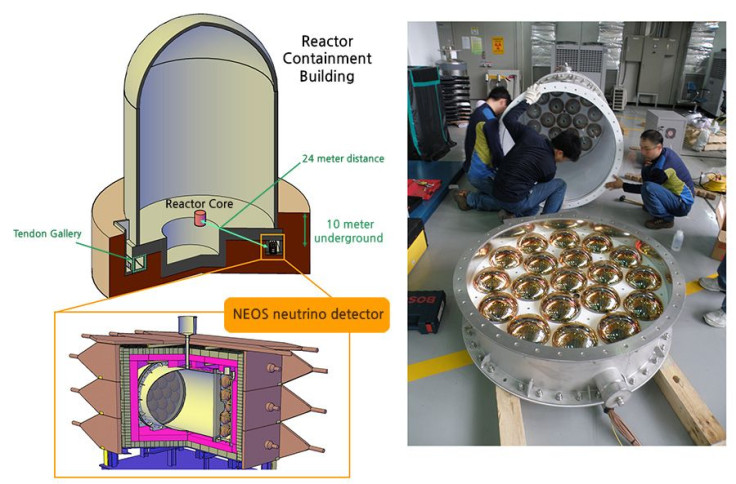What Are Sterile Neutrinos? NEOS Experiment Fails To Find Evidence For Hypothetical Particles

If sterile neutrinos exist, they are excellent at hiding themselves from prying human eyes.
Despite our best efforts, we have failed to unearth any evidence for the existence of these hypothetical particles, which, if they are real, could be the mysterious dark matter's constituent particles.
On Tuesday, researchers associated with the Neutrino Experiment for Oscillation at Short Baseline (NEOS) — located inside the Hanbit Nuclear Power Plant in Yeonggwang, South Korea — announced that they too had failed to detect these particles. On the plus side, they did discover more antineutrinos (the antimatter equivalent of neutrinos) with energies of about 5 megaelectronvolts than theoretical models predict — although what this “bump” signifies is still not entirely clear.
Read: Neutrino Oscillation Anomaly May Explain Why There Is Something Rather Than Nothing
“These results do not mean that sterile neutrinos do not exist, but that they are more challenging to find than what was previously thought,” Yoomin Oh, a member of the NEOS collaboration, said in a statement.
Before we understand what sterile neutrinos are, here’s what we need to know about neutrinos — once described as “the most tiny quantity of reality ever imagined by a human being.”
Neutrinos are perhaps the most exotic and least understood of all known subatomic particles. Produced by the decay of radioactive elements, these particles rarely, if ever, interact with matter, making them extremely hard to detect and study. Every second, trillions upon trillions of neutrinos traveling at nearly the speed of light pass through Earth.
Currently, neutrinos are known to have three different types, or “flavors” — the electron neutrino, the muon neutrino and the tau neutrino. Each of these flavors can change into the other, “oscillating” spontaneously as they travel over long distances. These particles, on the rare occasions they interact with surrounding matter, do so via weak nuclear force.
About two decades back, a neutrino experiment at the Los Alamos National Laboratory, New Mexico, produced an unexpected result — one that did not conform to what scientists knew about neutrinos. This is when the idea of sterile neutrinos was born. Scientists posit that these particles — if they exist — only interact with normal matter through gravity, or maybe through a hitherto unknown force (hence the “sterile”).
Unfortunately, the hunt for sterile neutrinos has not been very fruitful. In August, researchers at the IceCube Neutrino Observatory in Antarctica — the world’s largest neutrino experiment — revealed that they had failed to detect the particles, but had placed “strong limits on its possible existence.” Then, in October, researchers associated with the Daya Bay Neutrino Experiment in China and the Main Injector Neutrino Oscillation Search (MINOS) collaboration at the Fermi National Accelerator Laboratory in the U.S. also reported that their hunt for the elusive particles had come up empty, even as they narrowed down the “phase space” where sterile neutrinos may be hiding.
Read: Sterile Neutrino Search Comes Up Empty At IceCube Lab
The conclusion — if sterile neutrinos do exist, there is now a very small “parameter region” where they may still be hiding. For scientists still looking for these particles, the 5 MeV antineutrino anomaly detected by the NEOS experiment, among others, is, for now, the only hope.
© Copyright IBTimes 2025. All rights reserved.






















